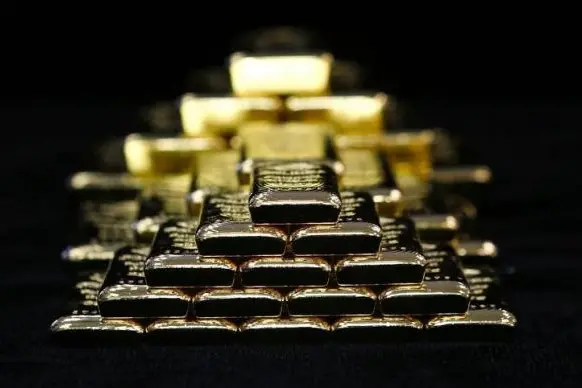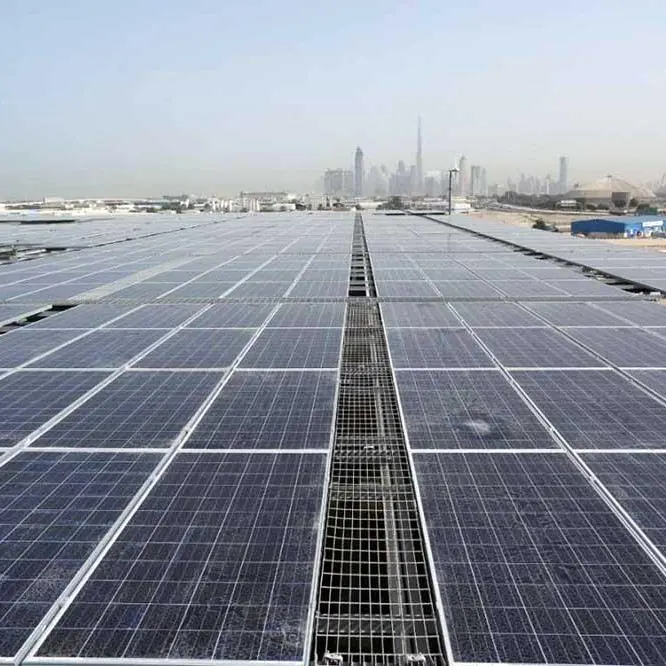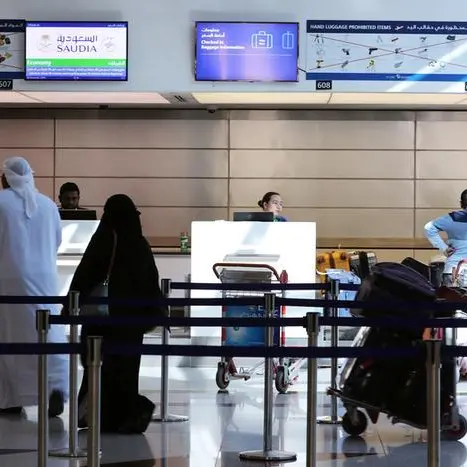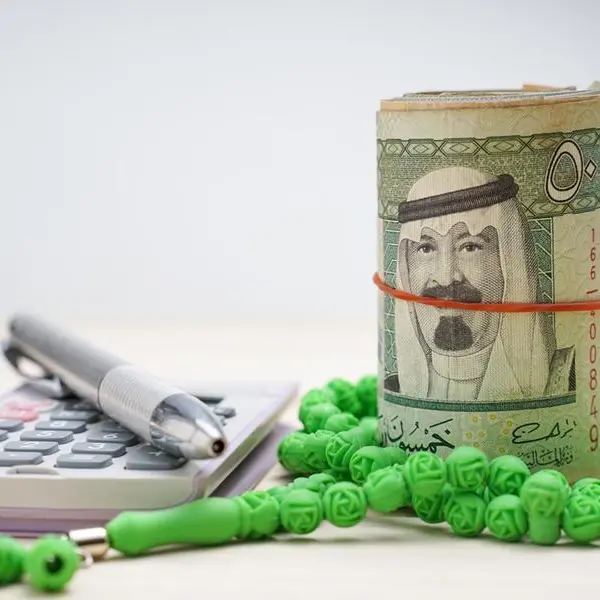PHOTO
Saudi Arabia’s state-run mining firm, Ma’aden, faces a tough task to achieve its goal of more than doubling its gold output by 2025, while higher costs are also hurting production margins. But with prices for the yellow metal in the ascendant, the company’s decision to invest heavily in opening new gold mines looks a smart move.
Founded in 1997 by royal decree, Ma’aden’s three main divisions are phosphate, aluminium and gold. In the first half of 2019, phosphate and aluminium accounted for 49 and 42 percent of sales revenue, with gold generating the remaining 9 percent.
Yet Ma’aden aims to increase the relative importance of its gold mining subsidiary, which in July awarded a 2.3 billion riyal contract ($606 million) to India’s L&T Construction to build production facilities at two new mines at Mansourah and Massarah.
Ma’aden predicts the two mines, which will be operational for 12 years, will on average produce 250,000 ounces between them annually, with commercial production due to begin in 2022. Ma’aden will invest 3.3 billion riyals in the project.
“This is quite sizeable and will enable them to reach the target Ma’aden has been talking about for the last few years, which is 500,000 ounces annually, but it also has several old mines that are depleting,” said Yousef Husseini, an equities analyst at EFG Hermes in Cairo.
“So, by the time the two new mines are fully operational, production won’t necessarily increase by 250,000 ounces from current levels because its other mines will have depleted in the meantime.”
Ma’aden’s six current mines are all due to close within 15 years. As-Suq and Mahad Ad-Dahab will end production in 2023, Ad-Duwayhi in 2027, Al-Amar in 2029, and Bulghah and Sukhaybarat in 2034. The latter also serves as a processing plant.
Once operational in 2022, the two new mines will boost Ma’aden’s annual gold production to around 600,000 ounces in 2023, Dubai’s Arqaam Capital predicts in a June 2019 note which also gives Ma’aden a “sell” rating and target price of 43.0 riyals. The stock ended Sunday at 45.20 riyals, down 8.3 percent year-to-date.
Mansourah and Massarah have a combined capacity of around 3.2 million ounces, which represents 48 percent of Ma’aden’s total gold reserves.
Saudi Arabia has found 849 potential gold mining sites within the kingdom, according to government data. These sites are largely located within the Arabian-Nubian Shield, or what Ma’aden calls Central Arabian Gold Region (CAGR), which stretches from the Red Sea to the middle of the kingdom.
The remote location of Saudi’s gold deposits, along with a lack of water – essential for mining - has made it tough and often prohibitively expensive to mine the precious metal.
REVENUE SLUMP
Although about gold production in the long-term, Ma’aden’s output has slumped this year. In the first half of 2019, it sold 163,452 ounces at an average price of $1,306 per ounce. In comparison, the company sold 221,023 ounces at an average price of $1,316 in the prior-year period. That led half-year gold revenues to fall 27 percent year-on-year to 800.5 million riyals. Ma’aden blamed the production drop on geological factors at one of its mines.
“In gold mining, geologists will try to identify the most concentrated deposits and target them via a mining plan, but whenever you’re mining between these deposits –what’s called a transitional zone – the grade of the ore will fall and this can temporarily impact your production and costs until you reach a higher grade area.” said Husseini.
“It’s unavoidable and is the nature of the industry, but we expect production will start to rise again as the year progresses.”
Husseini said the vast majority of Ma’aden’s gold was sold on global markets, with Saudi’s government placing little importance on retaining gold as part of its financial reserves.
“It’s more seen as a means to diversify Saudi’s exports from oil, in our view” said Husseini.
Ma’aden’s gold production costs have risen from an average of $300-400 per ounce a decade ago – which would be in the cheapest quartile globally – to $500-600 today, said Husseini, as some of the older mines started to deplete and energy prices in Saudi Arabia increased.
“That’s still extremely competitive,” he said. “For the new mines, it’ll be difficult to estimate the costs until they start operations. The regions where the goldmines are located are quite remote and undeveloped, so the company has to build some supporting infrastructure.
“This along with the fact that the cost of production from one mine to another can vary substantially makes it difficult to estimate the all-in costs for the project as well as the production costs.”
Ma’aden, 65 percent owned by the state Public Investment Fund, plans to spend a record 253 million riyals this year on gold exploration – roughly triple the annual average over the last decade. It spent 73 million riyals in 2016 and 55 million riyals in 2017, Arqaam notes.
Ma’aden reported a second-quarter net loss of 590.2 million riyals that it attributed to a slump in commodity prices and the restructuring of its aluminium rolling business.
ONE MILLION OUNCES?
The company has a much-publicised target to annually produce 1 million ounce of gold – or 28.3 tonnes – as part of its 2025 strategy. That would more than double last year’s record production of 415,000 ounces of the precious metal and would propel Saudi into the top 30 global gold producers.
Such ambitions are part of Saudi Arabia’s broader Vision 2030 in which the kingdom wants its mining sector to “contribute” 97 billion riyals by 2020, creating 90,000 jobs.
“Ma’aden does have the reserves to meet its targets, but it all depends on whether the company can successfully implement its plans because it is overleveraged and needs to improve efficiency as well as profitability of its other segments,” said an analyst who spoke on condition of anonymity.
“We’ll have a clearer idea in a year’s time as to whether Ma’aden can achieve its targets.”
Of last year’s production, 317,000 ounces – or more than three-quarters - was produced by Ad Duwayhi mine, which nearly doubled its production year-on-year and is due to close in 2027, Arqaam notes.
“Ma’aden is still a very young company and with multiple segments being launched for commercial operations at the same time, it has a lot on its plate,” said the analyst.
EFG’s Husseini predicts Ma’aden’s maximum annual production would likely remain around 500,000 ounces, which would provide 15-20percent of its revenue.
“It will have to continue investing to maintain that levels, because at the current extraction rate, production will start to fall significantly in the mid to late 2020s, even with Mansourah and Massarah,” said Husseini.
Arqaam forecasts Ma’aden will generate a record 2 billion riyals in gold sales in 2019, based on the company producing 406,000 ounces and prices at $1,300 per ounce. That would be nearly double 2016’s revenues, but revenue growth is likely to stagnate and eventually fall as production in Ma’aden’s ageing mines declines, Arqaam warns.
Ma’aden’s gold production EBITDA margin will also decline to 46 percent this year, down from 50 percent in 2018, Arqaam predicted in June. Margin compression is likely to be even more severe - in a July note, Arqaam highlighted that Ma’aden’s gold division EBITDA plunged to 32 percent in the second quarter, down 26 percentage points year-on-year and likely due to the decline in output and grade of gold.
Ma’aden could yet exceed expectations, with gold prices hitting a six-year high of $1,552 per ounce in early September. The precious metal was up 16.7 percent year-to-date as of Sept. 26.
These gains should ease the impact of rising production costs; Arqaam predicts it will cost Ma’aden $561 per ounce to mine gold this year, averaging costs of $620 per ounce from 2019-2021. Net annual income from gold will average 583 million riyals over the same period.
(Writing by Matt Smith; editing by Seban Scaria seban.scaria@refinitiv.com)
Our Standards: The Thomson Reuters Trust Principles
Disclaimer: This article is provided for informational purposes only. The content does not provide tax, legal or investment advice or opinion regarding the suitability, value or profitability of any particular security, portfolio or investment strategy. Read our full disclaimer policy here.
© ZAWYA 2019











